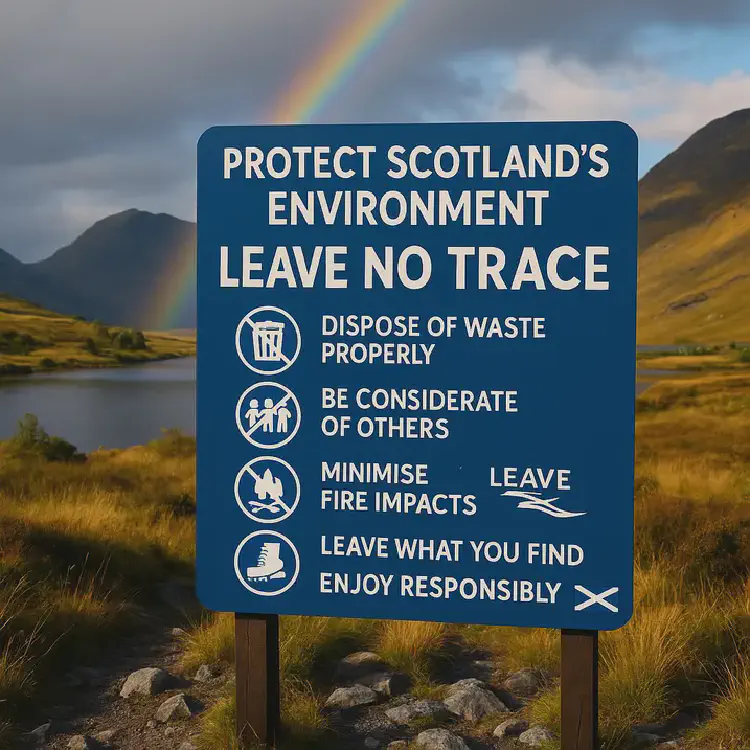Sustainable tourism practices
Scotland’s natural beauty and cultural heritage are treasures worth protecting. Practicing sustainable tourism ensures that future generations can enjoy the same breathtaking landscapes and vibrant communities.
- Scotland Tours
- 2 min read

Leave No Trace
Visitors are encouraged to follow Leave No Trace principles, including taking litter home, respecting wildlife, and leaving natural spaces as they were found.
Responsible Access
- Scotland’s Right to Roam law allows access to most land and water for recreation, but it comes with responsibilities: avoid damaging crops, respect privacy, and close gates behind you.
- Stick to paths where possible to protect fragile habitats.
Eco-Friendly Travel
- Use public transport such as trains, buses, and ferries to reduce carbon emissions.
- Cycling and walking are sustainable ways to explore cities and countryside.
- Car-sharing or electric car rentals are greener alternatives for road trips.
Supporting Local Communities
- Choose locally owned accommodation, restaurants, and shops to support the economy.
- Buy authentic Scottish crafts, food, and produce rather than mass-produced souvenirs.
- Participate in community-led tours and experiences.
Sustainable Accommodation
Many hotels, B&Bs, and hostels in Scotland now focus on sustainability through energy-saving measures, recycling, and eco-certifications.
Wildlife and Nature Respect
- Avoid feeding wild animals.
- Observe wildlife quietly and from a distance.
- Stick to guidelines for marine tours to prevent disturbing dolphins, whales, and seabirds.
Why Visitors Should Care
Tourism is vital to Scotland, but unmanaged travel can harm its landscapes and culture. By practicing sustainable tourism, visitors help protect Scotland’s beauty, reduce environmental impact, and give back to local communities—ensuring the magic of Scotland endures.